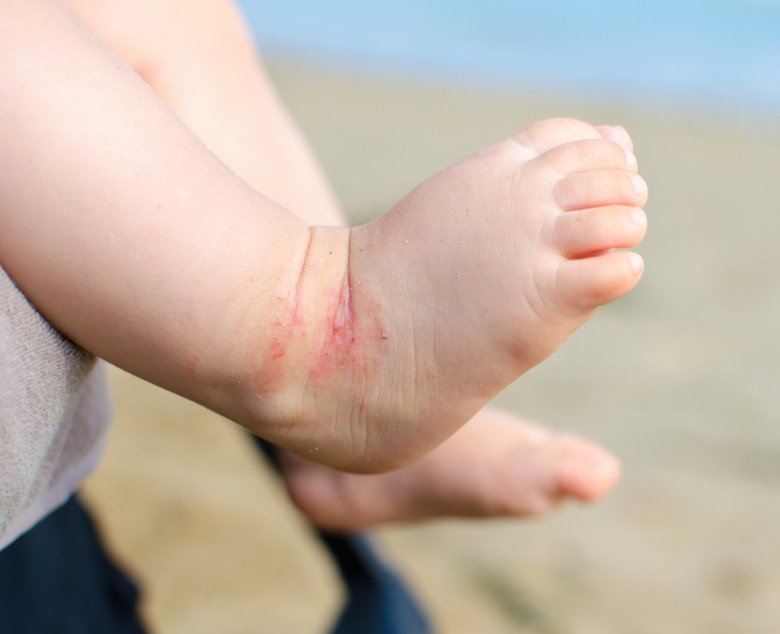People with atopic eczema have more S. aureus bacteria in their skin

People with atopic eczema have many more Staphylococcus aureus bacteria in their skin than those with healthy skin or psoriasis, according to a study by researchers at Karolinska Institutet in Sweden and the University of Helsinki in Finland. The study, published in the Nature Communications, shows how the S. aureus bacteria displaced other potentially health-promoting bacteria. The discovery may be important for future treatments of the skin disease.

Atopic eczema is a skin condition that manifests itself in the form of dry, red, itchy patches and is common in small children. For many children, the symptoms go away as they get older but some continue to have eczema throughout their lives. Psoriasis on the other hand is a chronic disease that usually develops when people are in their 20s and causes raised, red, scaly patches. Both conditions can lead to a deteriorating quality of life, with both physical and psychological effects.
What causes atopic eczema and psoriasis aren’t entirely known, but researchers think both genetics and environment can play a role as well as the abundance of microorganisms that populate the skin. Healthy skin is usually colonized by millions of bacteria that can both protect against pathogens and help the skin heal faster. However, disruption in the bacterial balance can trigger inflammation. Prior studies have shown that S. aureus can induce skin inflammation similar to atopic eczema and that its presence increases as the symptoms worsen.
Knocks out health-promoting bacteria
In this study, the researchers examined bacteria in skin samples collected from the back and thighs of some 350 people, of whom nearly two-thirds had either atopic eczema or psoriasis and the rest had healthy skin. The result showed an abundance of S. aureus in atopic eczema coupled with a significant reduction in potentially health-promoting bacteria such as Lactobacillus, Cutibacterium and Finegoldia. In psoriasis, the microbial composition changed but was not dominated by a single organism like in atopic eczema.
The researchers also discovered that S. aureus produced certain toxins that directly influenced the skin’s barrier and defense mechanisms by altering the expression of certain genes. The significant abundance of S. aureus fueled the skin’s metabolism by increasing the breakdown of sugar. The researchers observed the same physiological reaction that earlier this month was acknowledged with the Nobel prize, namely the HIF transcription factor, in skin attacked by S. aureus bacteria. They also noted signs of an expediated breakdown of vital amino acids in the skin—a possible attempt by the skin to eliminate the unwelcomed guest. In psoriasis, the correlation between bacteria and gene expression in the skin was less pronounced, which gives reason to focus on viruses and fungus in future studies.
May pave the way for new treatment methods
The researchers hope the findings could eventually pave the way for new treatment methods for these skin diseases. One possible way forward may be to transplant microorganisms from the skin in healthy people to ill individuals, a method that is currently used to treat people with inflammatory bowel disease.
“To facilitate conditions on the skin that benefit the growth of certain bacteria over others could be a natural way to keep the pathogens at bay,” says Nanna Fyhrquist, researcher at the Institute of Environmental Medicine at Karolinska Institutet and lead author.
The study was financed with the help of the Knut and Alice Wallenberg Foundation, the National Institute for Health Research, Dunhill Medical Trust, Association pour la Recherche contre le Cancer (ARC), European Research Council, Institute National de la Santé et de la Recherche Médicale, INCA, Fondation ARSEP, ANR och BIOMAP IMI2.
Publication
”Microbe-host interplay in atopic dermatitis and psoriasis,” Nanna Fyhrquist, Björn Andersson, Harri Alenuis et al., Nature Communications, October 16, 2019, DOI: 10.1038/s41467-019-12253-y
